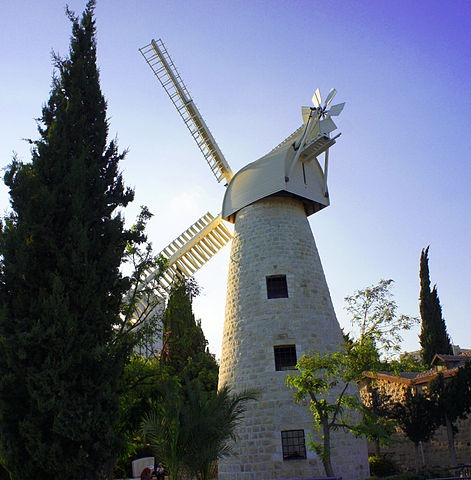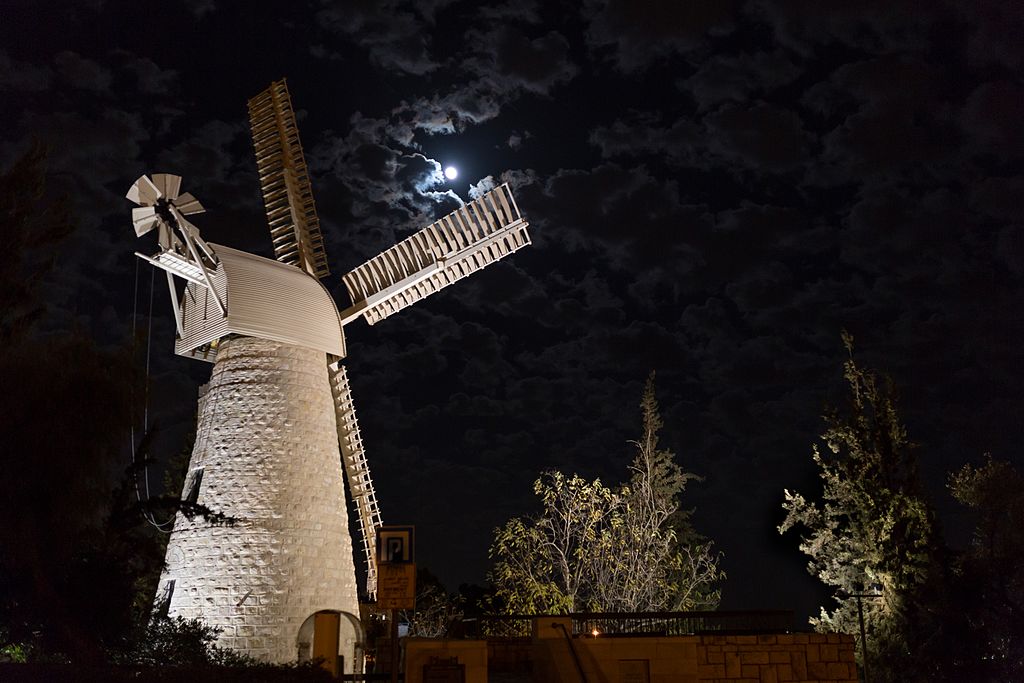The Jerusalem Windmill, also known as Montefiore Windmill, was built in the mid-19th century as Jewish settlement spread outside the Old City to the new neighborhoods of Yemin Moshe and Mishkenot Shananim; basically some of the first areas outside the Old City walls.
From a flour mill to a tourist attraction
Montefiore Windmill was named after its funder, the British-Jewish philanthropist Moses (or Moshe in Hebrew) Montefiore. It was built in 1857 originally as a flour mill, and was part of Montefiore’s project to help the Old Yishuv or Ha-Yishuv — a Jewish community living in Palestine before the establishment of the State of Israel — to help them become more self-sufficient. Montefiore, who focused on promoting the local industry, also built other businesses in the area, such as a printing press and a textile factory.
As the community later began to use steamed-powered mill to grind wheat — apart from the lack of strong breezes in the area — the Montefiore Windmill was eventually neglected and abandoned.
In 1948, during the War of Independence, Jewish fighters built an observation post on top of the windmill tower. In response, the British opponents ordered the windmill to be blown up in an operation known as “Operation Don Quixote.” But luckily, their planned bombing of the windmill never happened.
By chance, the unit tasked to bomb the windmill happened to come from Ramsgate, where Montefiore used to reside for a very long time. When the British soldiers observed the plaque that bore Montefiore’s name and the name of their hometown, they decided to “re-interpret” their orders and blew up only the observation post on top of the tower instead of the entire windmill.
While the building is now non-functional as a flour mill, the Montefiore Windmill has nevertheless continued to bear cultural significance. It is also now a popular tourist attraction. It has been cosmetically restored several times — the latest restoration work occurred in 2012 with the addition of a new cap and sails in the style of the originals. The blades can still turn in the wind.
Visiting Montefiore Windmill
The Montefiore Windmill now serves as a small museum devoted to Montefiore’s life and achievements. It also serves as a good reminder for visitors who wish to learn more about the transition of the Old Jerusalem in the 19th century to the new Jerusalem in the years that followed.
Near the windmill is a sign showing the growth of the population of Jerusalem over the last 130+ years.
The windmill was supposed to supply work, but the legend says that it was built facing the wrong direction and never caught the wind! Nearby is Montefiore’s coach which he used to travel the Holy Land on his trips.
Walk on to the Plaza and enjoy the view of the Old City. The windmill itself is very photogenic in all light and at all angles, but the phenomenal views of the Old City and Mount Zion is one of the treasures of Jerusalem.
See Montefiore Windmill & Yemin Moshe Photos. Let your eyes follow the walls see Jaffa Gate and the Tower of David and then absorb the skyline of all the buildings and Mount Zion is just in front of you, (with David’s Tomb, grey roofed Dormition Abbey and Site of the Last Supper)
It puts the Old City close up and personal. Feel free to come back at different times of the day and many times during your visit.
If you have time wander through the passages of Yemin Moshe and Mishkenot Shananim these were the first neighborhoods to be built in the New City. They are now an artist colony and upscale residencies, but consist of a few amazingly pretty streets and adjacent park area (if you have children then this is a place to give them some downtime – see Open Spaces) whilst you enjoy the view
Most of the view is available to wheelchair access – although the neighborhood itself is harder.
Nearby you can explore some of the views and sites along the ridge – see Don’t Miss in the New City

